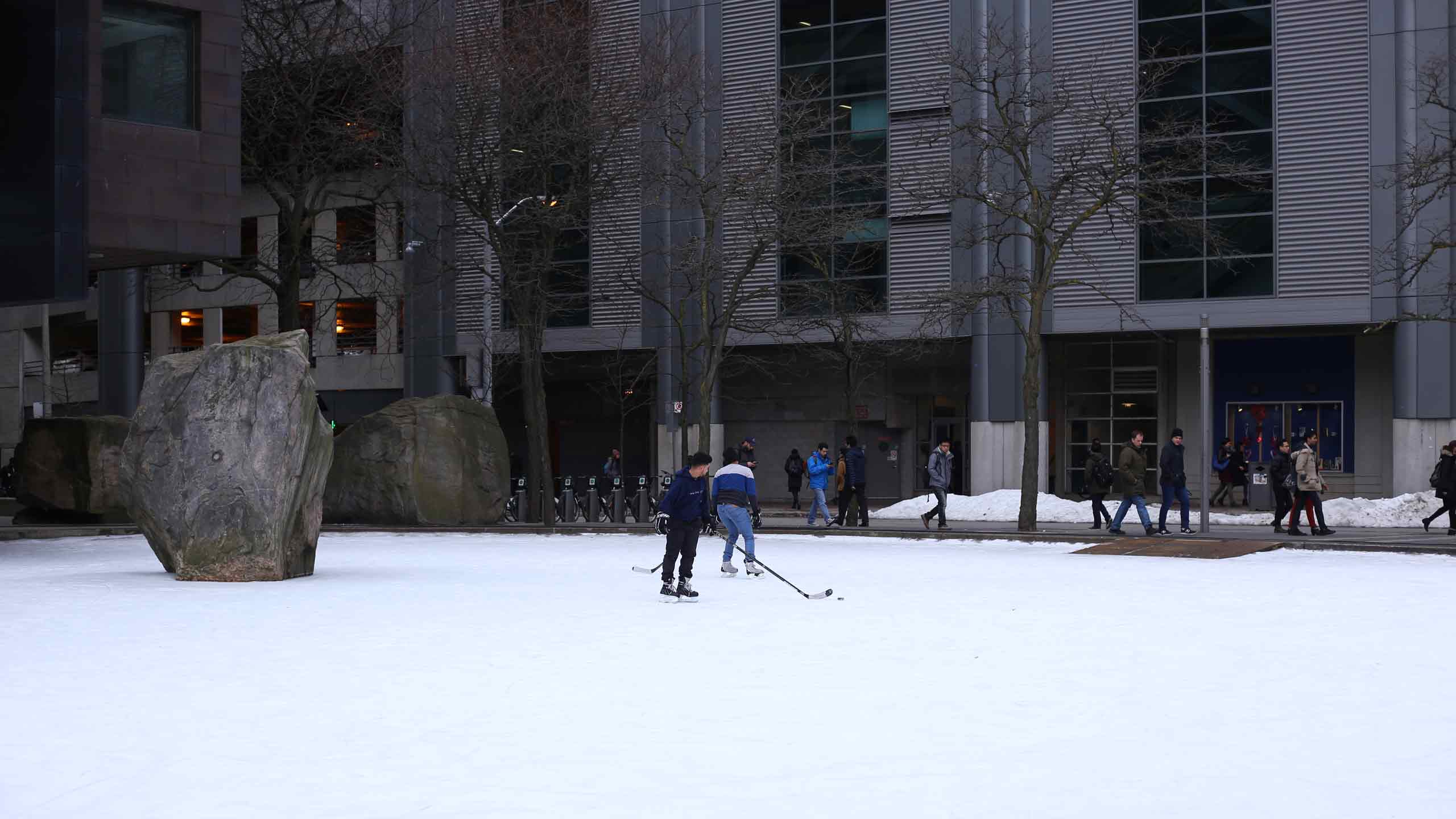Our sports editor’s mom kicks off a brand-new Eyeopener column, bringing you pearls of sports wisdom from the real MVP.
By Daniel’s Mom
“Mummy, I wanna go skating.”
“Let’s make sure your helmet is buckled.”
“Ma, I’m meeting Julian at the park…the ice is ready.”
“Don’t forget your helmet.”
“Where are you off to?”
“Shinny.”
“Are you guys wearing helmets?”
I am under no illusions that the helmet may come off at the rink. Risk versus reward changes when my kids step out with their friends.
So I have to approach this a different way:
“If I catch you without a helmet you won’t be playing for A YEAR.”
“I paid a fortune for your braces!”
“Promise me on MY LIFE AS YOUR MOTHER that you will keep that helmet on!”
I’ve had limited success with the “appeal to teenage image” approach: “do you really want *insert significant other’s name* to see your hair all sweaty like that?”
The older they get, the less control a mother has. But that doesn’t mean the fear factor diminishes.
The helmet battle may be a losing one, but it’s one I continue to wage with my kids, even as the youngest of three now nears the end of his time at Ryerson. It’s a battle I’ll wage until my kids are parents. Then they will feel my pain.
And it is painful –and very scary—to watch as your child gets slammed into the boards, or trips up and lands on anything that isn’t padded. As a parent, your instinct is to run out and help them up, check the bruises and claw at the player that caused the spill. So imagine how the fear factor expands exponentially when a head injury happens. Because if there is damage, it’s usually hidden and delayed. And it’s not just moms being –you know—moms.
The stats are sobering. According to a 2013 study from St. Michael’s Hospital, ice hockey is the biggest contributor to repetitive mild traumatic brain injuries, or TBIs, in Canada. And TBIs don’t always present observable symptoms; only after his death in 2011 did Derek “Boogeyman” Boogaard’s autopsy reveal chronic traumatic encephalopathy—degenerative, progressive and fatal.
Pretty much every hockey official, and anyone associated with the game—even if they wear flowered suits instead of a jersey—would advise players at every level to helmet up. It’s a requirement in any organized league at any level. But what about shinny? Let’s face it, students. If you’re on the pond this season, you are not headed for the NHL. But that doesn’t mean you won’t get hit or lose your balance, and it doesn’t make the ice any softer. You are out there to get some air, to get some exercise, to blow off some steam. School can be stressful, but picture this:
What could be more stressful than months of recovery and rehabilitation after a head injury, knowing that your semester, and perhaps much more, cannot be salvaged? And these are merely the immediate consequences of a head or face injury.
All for the sake of looking cool during shinny.
Early on, we teach our kids the mantra: “Safety first, then fun”, but we know they have to monitor their own well-being too. So moms will continue to threaten, plead, and make a case for wearing helmets on the ice. Buckle up this shinny season. For your mother’s sake, and for your own.
Helmets may not be cool. But moms don’t care about cool.










Leave a Reply